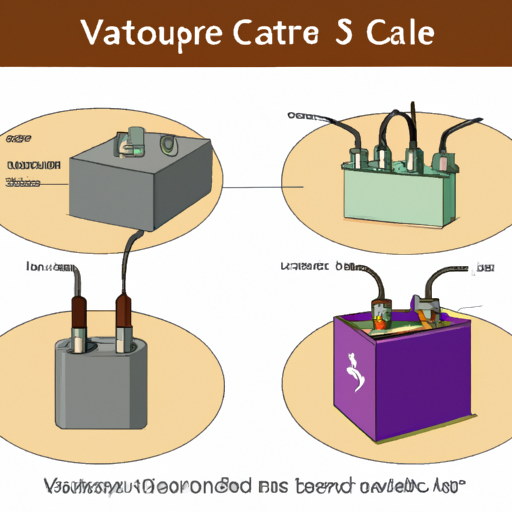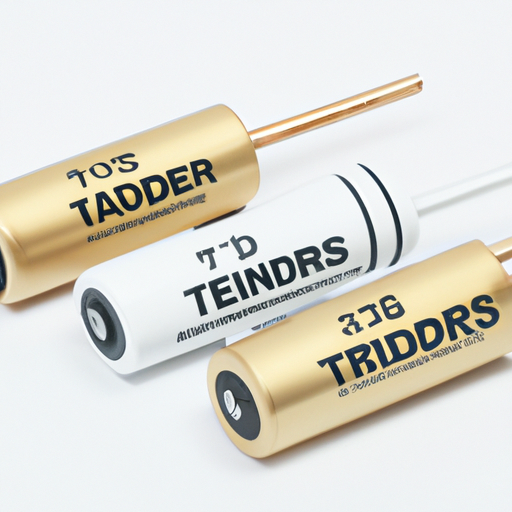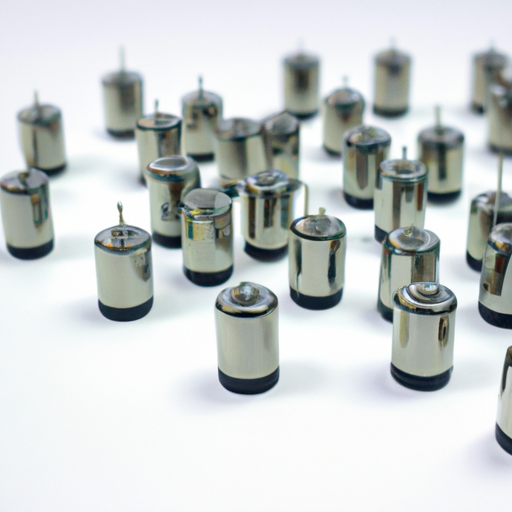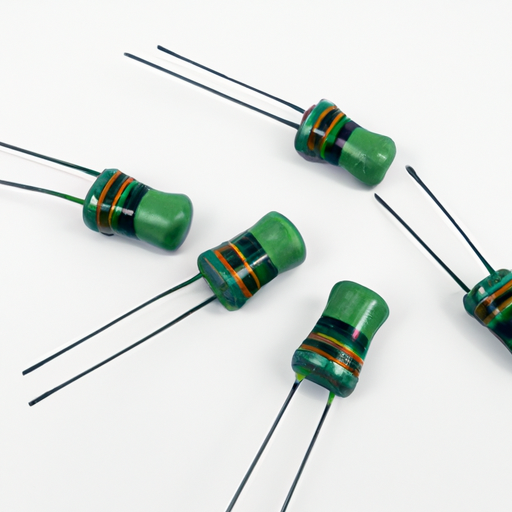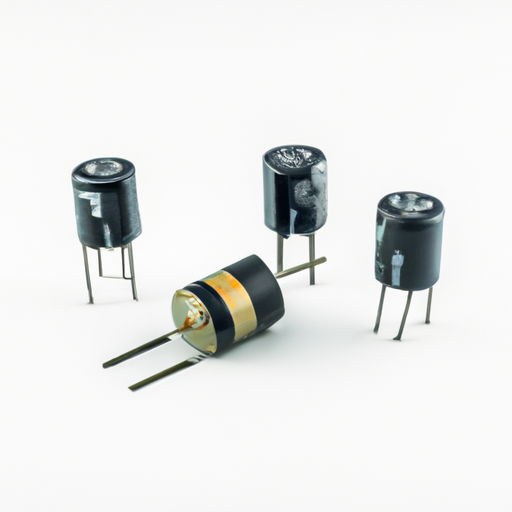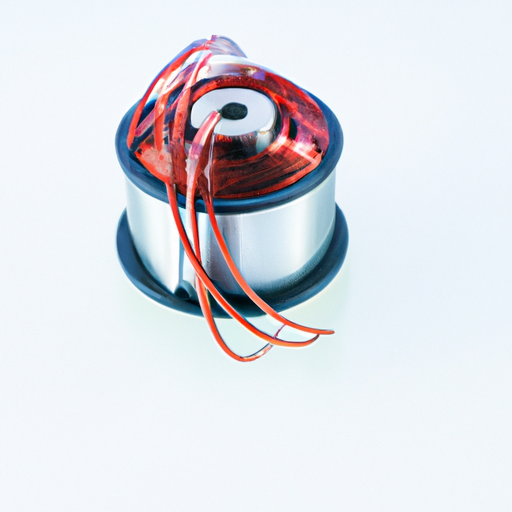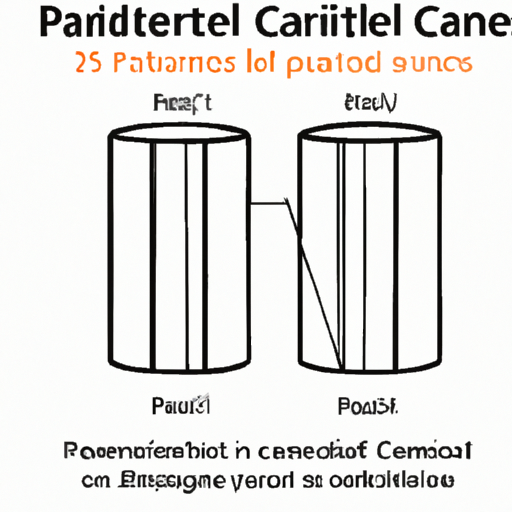Understanding Capacitor Voltage
I. Introduction
Capacitors are fundamental components in the world of electronics, playing a crucial role in various applications, from power supply circuits to signal processing. One of the key aspects of capacitors that every electronics enthusiast should understand is capacitor voltage. In this article, we will explore what capacitor voltage is, why it matters, and how it impacts the performance of electronic circuits.
II. Basics of Capacitors
A. What is a Capacitor?
A capacitor is a passive electronic component that stores electrical energy in an electric field. It consists of two conductive plates separated by an insulating material known as a dielectric. When a voltage is applied across the plates, an electric field is created, allowing the capacitor to store charge.
1. Definition and Function
The primary function of a capacitor is to store and release electrical energy. This ability makes capacitors essential in various applications, including energy storage, filtering, and timing circuits.
2. Types of Capacitors
There are several types of capacitors, each with unique characteristics and applications:
Electrolytic Capacitors: Known for their high capacitance values, these capacitors are polarized and typically used in power supply circuits.
Ceramic Capacitors: These non-polarized capacitors are commonly used in high-frequency applications due to their stability and low equivalent series resistance (ESR).
Film Capacitors: Made from thin plastic films, these capacitors are known for their reliability and are often used in audio applications.
B. How Capacitors Work
1. Charge Storage Mechanism
When a voltage is applied to a capacitor, electrons accumulate on one plate, creating a negative charge, while the other plate loses electrons, resulting in a positive charge. This separation of charge creates an electric field between the plates, allowing the capacitor to store energy.
2. Capacitance and Its Units
Capacitance is the measure of a capacitor's ability to store charge per unit voltage. It is expressed in farads (F), with common subunits including microfarads (µF) and picofarads (pF). The higher the capacitance, the more charge a capacitor can store.
C. Key Parameters of Capacitors
1. Voltage Rating
Every capacitor has a voltage rating, which indicates the maximum voltage it can handle without risk of failure. Exceeding this rating can lead to capacitor breakdown, leakage, or even explosion.
2. Capacitance Value
The capacitance value determines how much charge a capacitor can store. It is essential to select the appropriate capacitance for a given application to ensure optimal performance.
3. Equivalent Series Resistance (ESR)
ESR is a measure of the internal resistance of a capacitor, which affects its efficiency and performance in high-frequency applications. Lower ESR values are generally preferred for better performance.
III. Understanding Voltage in Capacitors
A. Definition of Voltage in the Context of Capacitors
In the context of capacitors, voltage refers to the electric potential difference between the two plates. This voltage is crucial for determining how much charge the capacitor can store.
B. Relationship Between Voltage, Charge, and Capacitance
The relationship between voltage (V), charge (Q), and capacitance (C) is defined by the formula:
\[ V = \frac{Q}{C} \]
Where:
V = Voltage across the capacitor
Q = Charge stored in the capacitor
C = Capacitance of the capacitor
This formula illustrates that for a given capacitance, the voltage across the capacitor increases as more charge is stored.
C. Importance of Voltage Rating
1. Maximum Voltage and Safety
The voltage rating of a capacitor is critical for safety and reliability. Using a capacitor beyond its rated voltage can lead to catastrophic failure, including leakage, overheating, or explosion.
2. Consequences of Exceeding Voltage Rating
Exceeding the voltage rating can cause dielectric breakdown, where the insulating material fails, allowing current to flow between the plates. This can damage the capacitor and potentially harm other components in the circuit.
IV. Capacitor Voltage in Circuits
A. Role of Capacitors in Electrical Circuits
Capacitors serve various roles in electrical circuits, including:
1. Energy Storage and Release
Capacitors can store energy and release it when needed, making them essential in power supply circuits to smooth out voltage fluctuations.
2. Filtering and Smoothing Applications
In power supply circuits, capacitors filter out noise and smooth voltage levels, ensuring stable operation of electronic devices.
B. AC vs. DC Voltage in Capacitors
1. Behavior of Capacitors in AC Circuits
In alternating current (AC) circuits, capacitors continuously charge and discharge as the voltage changes direction. This behavior allows capacitors to block DC while allowing AC signals to pass, making them useful in coupling and decoupling applications.
2. Behavior of Capacitors in DC Circuits
In direct current (DC) circuits, capacitors charge to the applied voltage and then hold that charge until the circuit is interrupted. Once fully charged, they act as an open circuit.
C. Voltage Ripple and Its Effects
1. Definition of Voltage Ripple
Voltage ripple refers to the small, unwanted variations in voltage that can occur in power supply circuits, often caused by the charging and discharging of capacitors.
2. Impact on Circuit Performance
Excessive voltage ripple can lead to poor performance in electronic devices, causing instability and noise. Proper capacitor selection and placement can help mitigate these effects.
V. Measuring Capacitor Voltage
A. Tools and Equipment for Measurement
To measure voltage across a capacitor, you can use:
1. Multimeters
Digital multimeters (DMMs) are commonly used to measure voltage, current, and resistance in circuits, including across capacitors.
2. Oscilloscopes
For more detailed analysis, oscilloscopes can visualize voltage waveforms, allowing you to observe changes in voltage over time.
B. Steps to Measure Voltage Across a Capacitor
1. Safety Precautions
Before measuring voltage, ensure the circuit is powered down and take necessary safety precautions to avoid electric shock.
2. Measurement Techniques
To measure voltage, connect the multimeter probes across the capacitor terminals, ensuring correct polarity for polarized capacitors.
C. Interpreting Measurement Results
1. Understanding Readings
Interpreting the voltage readings is crucial for assessing capacitor performance. A reading close to the expected voltage indicates proper function, while significantly lower readings may suggest a failing capacitor.
2. Common Issues and Troubleshooting
Common issues include capacitor leakage, which can lead to inaccurate readings. If a capacitor is suspected to be faulty, it may need to be replaced.
VI. Practical Applications of Capacitor Voltage
A. Capacitors in Power Supply Circuits
1. Smoothing Capacitors
Smoothing capacitors are used in power supply circuits to reduce voltage ripple and provide a stable output voltage.
2. Decoupling Capacitors
Decoupling capacitors help filter out noise and stabilize voltage levels in sensitive electronic circuits.
B. Capacitors in Timing Circuits
1. RC Timing Circuits
Resistor-capacitor (RC) timing circuits use capacitors to create time delays, essential in applications like timers and oscillators.
2. Applications in Oscillators
Capacitors play a vital role in oscillator circuits, determining the frequency of oscillation based on their capacitance value.
C. Capacitors in Signal Processing
1. Filters (Low-pass, High-pass, Band-pass)
Capacitors are integral to filter circuits, allowing specific frequency ranges to pass while blocking others, essential in audio and communication systems.
2. Coupling and Bypass Capacitors
Coupling capacitors transmit AC signals between stages of an amplifier, while bypass capacitors filter out noise from power supply lines.
VII. Safety Considerations
A. Risks of High Voltage Capacitors
1. Electric Shock Hazards
High voltage capacitors can store dangerous levels of energy, posing a risk of electric shock if mishandled.
2. Capacitor Failure and Explosions
Failure of high voltage capacitors can lead to explosions, causing damage to surrounding components and potential injury.
B. Best Practices for Handling Capacitors
1. Discharging Capacitors Safely
Always discharge capacitors before handling them, using a resistor to safely dissipate stored energy.
2. Proper Storage and Disposal
Store capacitors in a safe, dry environment and dispose of them according to local regulations to prevent environmental harm.
VIII. Conclusion
Understanding capacitor voltage is essential for anyone involved in electronics, from hobbyists to professionals. By grasping the fundamental concepts of capacitors, their voltage ratings, and their applications in circuits, you can enhance your knowledge and skills in electronics. We encourage you to explore further and deepen your understanding of this vital component in the world of electronics.
IX. References
- Suggested Reading Materials
- Online Resources and Tutorials
- Relevant Standards and Guidelines in Electronics
This comprehensive overview of capacitor voltage provides a solid foundation for understanding this critical aspect of electronics, ensuring that you are well-equipped to work with capacitors in various applications.

